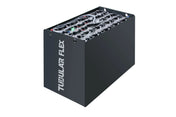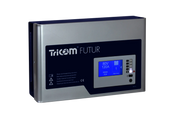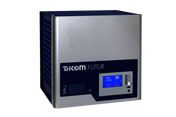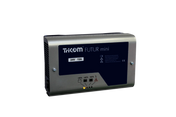Forklift batteries are hazardous goods and are subject to strict regulations regarding occupational health and safety, storage, and transport. This guide provides a practical overview of the most important obligations, safety measures, and legal changes effective from 2025.
Dangerous goods status and legal basis
Forklift batteries are considered hazardous goods regardless of their type—lead-acid batteries according to ADR Class 8, lithium-ion batteries according to ADR Class 9. This is due to corrosive electrolytes and the risk of short circuits or fire.
The regulations of the ADR, GGVSEB, GHS/CLP, and, from August 2025, the new Battery Ordinance (BattDG/BattVO) apply to transport, storage, and disposal. This regulation stipulates, among other things, mandatory documentation requirements and take-back systems.
Occupational safety & risk assessment according to DGUV
Every company must conduct a risk assessment (according to DGUV Rule 100-002, the German Occupational Safety and Health Act (ArbSchG), and the German Ordinance on Work Safety and Health). This assessment covers all risks associated with the transport, storage, charging, and maintenance of batteries.
These include mechanical damage, chemical leakage, electrical short circuits, overheating and ergonomic stress when lifting heavy batteries.
Technical protective measures in operation
Transport and storage
UN-certified, shock-resistant packaging is required for the transport of forklift batteries . Terminals must be insulated against short circuits. Damaged batteries may only be transported in accordance with ADR special provision SV 376.
Storage requires separate, ventilated and fireproof rooms, clearly marked danger areas and regular condition checks.
Loading areas and explosion protection
Hydrogen is produced during the charging of lead-acid batteries. Therefore, adequate natural or mechanical ventilation is mandatory. Zones must be classified according to ATEX, and electrical installations must be explosion-proof.
Smoking and open flames are prohibited in the charging area. Chargers require overload protection, and terminal contacts must be clean and securely connected.
Fire protection measures
Battery storage facilities must be designed as separate fire compartments, equipped with fire extinguishing equipment and fire alarm systems. Increased requirements apply to lithium-ion batteries according to DGUV Information 205-041 ("Fire Protection LIB").
Fire extinguishers with a strong cooling effect (e.g., water extinguishers) must be kept on hand. Batteries must not be stored in escape routes or in areas with a high fire load.
Organizational protective measures
Training obligations
All employees who work with forklift batteries must be trained, especially regarding the transport of hazardous goods and maintenance and loading. Refresher training must be conducted regularly.
Documentation requirement
All inspections, maintenance, and training must be documented in writing. This evidence is crucial in the event of an accident at work or an official inspection.
Handling defective batteries
Damaged or leaking batteries are considered hazardous waste. They must not be stored or transported together with intact batteries. Special packaging and labeling regulations apply for transport.
Personal protective equipment (PPE)
When working with batteries, protective goggles, face protection, acid-resistant gloves, and safety shoes are mandatory. Cut-resistant or mechanically reinforced gloves should be worn when lifting heavy batteries.
PPE must be regularly inspected, cleaned, and replaced as soon as damage is visible. Only approved protective equipment (Category III) may be used.
Explosion protection during charging – DGUV FBRCI-013
At a hydrogen concentration of approximately 4% or higher, an explosive atmosphere can develop. To prevent this, ventilation systems, gas sensors, and markings (W026 – "Warning: Explosive Atmosphere") are required.
All sources of sparks must be avoided. Chargers must be equipped with shutdown mechanisms, and charging areas must be kept free from unauthorized access.
Fire protection for lithium-ion batteries – DGUV 205-041
Lithium-ion forklift batteries pose an increased fire risk due to thermal runaway. They must only be stored in suitable containers or charging cabinets.
Loading and storage areas must be designated as high-risk fire zones. Fire extinguishers with high cooling capacity must be kept on hand; extinguishing agents with low cooling capacity are unsuitable.
New legislation from 2025 – BattDG & BattVO
With the new EU Battery Regulation (BattVO) and the Battery Implementation Act (BattDG), stricter requirements will apply from August 2025. Manufacturers and retailers must register with the EAR Foundation and participate in take-back systems.
Documentation, recycling, and information obligations will be expanded. The transition period for full implementation ends on January 15, 2026.
Checklists for safe operation
storage
At least 2.5 m away from flammable materials, no storage of damaged batteries, regular visual inspections. Rooms must be dry, ventilated, and equipped with suitable extinguishing agents.
transport
Use only UN-approved packaging, seal terminals, and carry complete transport documentation. Transport defective batteries only in accordance with special regulations.
Load
Use only tested chargers, ensure good ventilation, and keep fire alarms operational. Escape routes must remain clear at all times.
staff
All employees require annual training and individually assigned PPE. Health checks and regular refresher courses increase safety and legal compliance.
Summary: The most important security principles
Forklift batteries are hazardous materials and require consistent safety measures. Risk assessment, training, PPE, and explosion and fire protection are mandatory.
The new legislation, effective from 2025, will tighten the requirements for manufacturers, dealers, and operators. Those who comply with the DGUV and ADR regulations protect employees, property, and the environment – and remain legally compliant in their operations.







